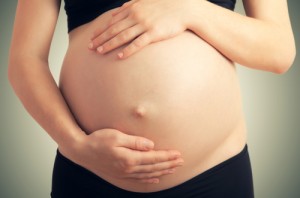Scientists link air pollution to low birth-weight
Report by researchers in Barcelona draws links between mothers’ exposure to traffic pollution and low birth-weight in infants
Exposure to traffic pollution during pregnancy — even at levels below limits set out by the European Union’s Air Quality Directive — could significantly increase the risk of restricted foetal growth, a study has found.
Scientists from the Centre for Research in Environmental Epidemiology (CREAL) in Barcelona compiled the study, which also examined the effect on neurodevelopment of babies.
And, researchers estimated that if levels of PM 2.5 were reduced to 10 microg/m³ (the WHO annual average air quality guideline value), 22% of cases of low birthweight among term deliveries could be prevented.
The study used data from the European Study of Cohorts for Air Pollution Effects (ESCAPE) — coordinated by the University of Utrecht in the Netherlands, which pooled data from research in 12 European countries involving over 74,000 births between February 1994 and June 2011.
Air pollution concentrations of nitrogen oxides and particulate matter were estimated at the mothers’ homes using land-use regression models, while traffic density on the nearest road and total traffic load on all major roads within 100 metres of the mother’s home were also recorded.
Research
The study claims that all air pollutants, particularly PM 2.5, and traffic density increased the risk of low birthweight at term and reduced average head circumference at birth, after accounting for other factors such as maternal smoking, age, weight, and education.
Dr Marie Pedersen, lead author of the report, said: “Our findings suggest that a substantial proportion of cases of low birthweight at term could be prevented in Europe if urban air pollution, particularly fine particulate matter was reduced.
“The widespread exposure of pregnant women worldwide to urban ambient air pollution at similar or even higher concentrations than those assessed in our study provides a clear message to policy makers to improve the quality of the air we all share.”
The CREAL study is thought to be one of the largest of its kind, and was published in international journal Lancet Respiratory Medicine last month.

















Thank you for this report – very interesting.
But if it is a significant correlation that has been found, it doesn’t necessaily mean “cause and effect” – just that low birth weight/growth and levels of pollution are related (one goes up as one goes down or both go up and down together). Could it also be that poorer, and hence less well nourished, families live in cheaper housing (by necessity) which happens to be closer to main roads where the pollution is stronger? If so, then the correlation is an artefact – the real driving force might be poor nutrition – or ill health in the parents (and in the infants themselves). I’ll have to read the actual study now! Thank you for alerting me to it.
If the link is real, then “dirtier” cities (countries) ought to have smaller/weaker infants in general? And what about older children and adults too? This study could be useful in promoting the need for better air quality all round. Personally, I’m worried about the rise in the number of domestic wood burning stoves (as well as vehicle emissions) the air in our towns and villages seems much smokier than it used to be (which is a shame after we got rid of so much “smog” in UK after WW2) – I suppose wood fires are attractive not only ebcause they seem “cosy” but because they may be cheaper than gas, oil or electricity? Not good news … we just had a window frame replaced and the builder/workman asked if we wanted to keep the old bits of wood to burn! No thanks, we said! Damp and covered in old paint – the worse sort of wood to burn, I’m told – but presumably that is what people are doing …. and we see more and more folks collecting wet salty drift wood on the shore these days …..